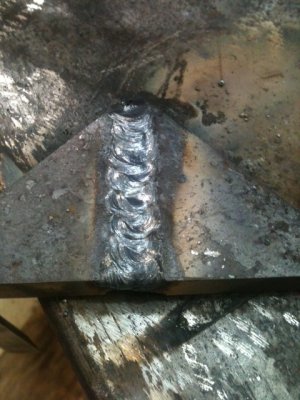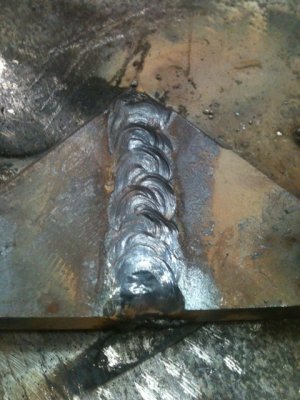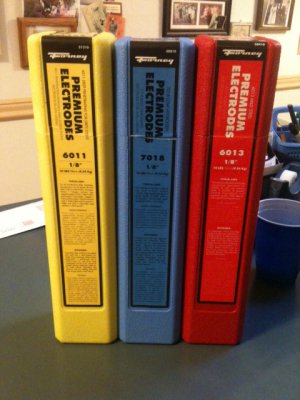- Joined
- Feb 18, 2013
- Messages
- 21
Hello everyone,
I am at a loss as to how to contribute to this forum being a welder that wants to be a machinist... All I know of machining is what I read online and absorb at work. I can count on one hand the number of times I've gotten to run a machine...
I do however weld on a daily basis with all of the common processes, and have spent much time and effort to learn as much as I can about the how and why of making metals melt the way you want them too.
So does anyone have any burning questions about welding or even a general curiosity about something that you'd like to ask?
I have a few pictures I'll post up... can't tonight, out of time...
Quick bit of advice on MIG and Flux Core welding; Mind your Contact Tip to Work distance/ electrode extension. This is how far away the contact tip is from the plate your welding. With wire welding, more electrode extension means more of the amps go into heating the wire by resistance before it meets the plate/arc. What happens is that the wire heats up before it reaches the point of melting and arcing. For solid wire that means less volts at the arc which means a smaller arc that will pop and stutter. Keeping the contact tip as close to the weld as you can will help, an 1/8 to a 1/4 depending on the thickness and amperage. Flux core wires, either self shielded or dual shielded (requires additional shielding gas) have a specific distance that they work best at. Read the instructions or ask the manufacturer. Some self shielded wires NEED about 3/4 to 2 inches of wire stick out to run right, usually with some sort of guide. This is because they use the resistance heating to bring the flux elements in the core up to temp before they hit the arc/puddle.
Thank you all, gotta run, Ask Away. :welding:
-Clif
I am at a loss as to how to contribute to this forum being a welder that wants to be a machinist... All I know of machining is what I read online and absorb at work. I can count on one hand the number of times I've gotten to run a machine...
I do however weld on a daily basis with all of the common processes, and have spent much time and effort to learn as much as I can about the how and why of making metals melt the way you want them too.
So does anyone have any burning questions about welding or even a general curiosity about something that you'd like to ask?
I have a few pictures I'll post up... can't tonight, out of time...
Quick bit of advice on MIG and Flux Core welding; Mind your Contact Tip to Work distance/ electrode extension. This is how far away the contact tip is from the plate your welding. With wire welding, more electrode extension means more of the amps go into heating the wire by resistance before it meets the plate/arc. What happens is that the wire heats up before it reaches the point of melting and arcing. For solid wire that means less volts at the arc which means a smaller arc that will pop and stutter. Keeping the contact tip as close to the weld as you can will help, an 1/8 to a 1/4 depending on the thickness and amperage. Flux core wires, either self shielded or dual shielded (requires additional shielding gas) have a specific distance that they work best at. Read the instructions or ask the manufacturer. Some self shielded wires NEED about 3/4 to 2 inches of wire stick out to run right, usually with some sort of guide. This is because they use the resistance heating to bring the flux elements in the core up to temp before they hit the arc/puddle.
Thank you all, gotta run, Ask Away. :welding:
-Clif


 :banghead: very very tricky machine and hardly ever used.
:banghead: very very tricky machine and hardly ever used. 


